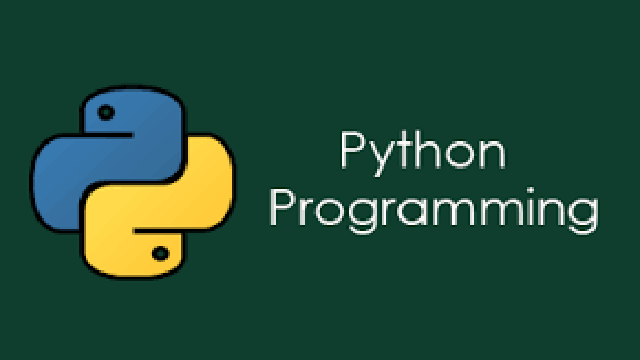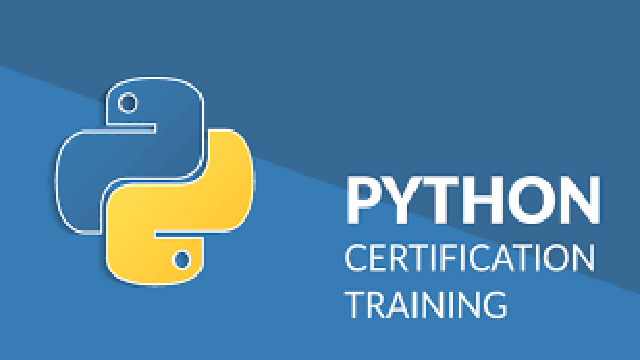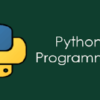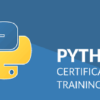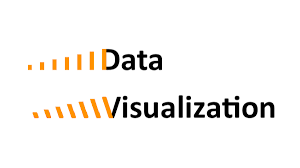Course Description
Python is a general-purpose interpreted, interactive, object-oriented, and high-level programming language. Python has been one of the premier, flexible, and powerful open-source language that is easy to learn, easy to use, and has powerful libraries for data manipulation and analysis.
Course – Topics
Introduction to Languages
- What is Language?
- Types of languages
- Introduction to Translators
- Compiler
- Interpreter
- What is Scripting Language?
- Types of Script
- Programming Languages v/s Scripting Languages
- Difference between Scripting and Programming languages
- What is programming paradigm?
- Procedural programming paradigm
- Object Oriented Programming paradigm
Introduction to Python
- What is Python?
- WHY PYTHON?
- History
- Features – Dynamic, Interpreted, Object oriented, Embeddable, Extensible, Large standard libraries, Free and Open source
- Why Python is General Language?
- Limitations of Python
- What is PSF?
- Python implementations
- Python applications
- Python versions
- PYTHON IN REALTIME INDUSTRY
- Difference between Python 2.x and 3.x
- Difference between Python 3.7 and 3.8
- Software Development Architectures
Python Software’s
- Python Distributions
- Download &Python Installation Process in Windows, Unix, Linux and Mac
- Online Python IDLE
- Python Real-time IDEs like Spyder, Jupyter Note Book, PyCharm, Rodeo, Visual Studio Code, ATOM, PyDevetc
Python Language Fundamentals
- Python Implementation Alternatives/Flavors
- Keywords
- Identifiers
- Constants / Literals
- Data types
- Python VS JAVA
- Python Syntax
Different Modes of Python
- Interactive Mode
- Scripting Mode
- Programming Elements
- Structure of Python program
- First Python Application
- Comments in Python
- Python file extensions
- Setting Path in Windows
- Edit and Run python program without IDE
- Edit and Run python program using IDEs
- INSIDE PYTHON
- Programmers View of Interpreter
- Inside INTERPRETER
- What is Byte Code in PYTHON?
- Python Debugger
Python Variables
- bytes Data Type
- byte array
- String Formatting in Python
- Math, Random, Secrets Modules
- Introduction
- Initialization of variables
- Local variables
- Global variables
- ‘global’ keyword
- Input and Output operations
- Data conversion functions – int(), float(), complex(), str(), chr(), ord()
Operators
- Arithmetic Operators
- Comparison Operators
- Python Assignment Operators
- Logical Operators
- Bitwise Operators
- Shift operators
- Membership Operators
- Identity Operators
- Ternary Operator
- Operator precedence
- Difference between “is” vs “==”
Input & Output Operators
- Input
- Command-line arguments
Control Statements
- Conditional control statements
- If
- If-else
- If-elif-else
- Nested-if
- Loop control statements
- for
- while
- Nested loops
- Branching statements
- Break
- Continue
- Pass
- Return
- Case studies
Data Structures or Collections
- Introduction
- Importance of Data structures
- Applications of Data structures
- Types of Collections
- Sequence
- Strings, List, Tuple, range
- Non sequence
- Set, Frozen set, Dictionary
- Strings
- What is string
- Representation of Strings
- Processing elements using indexing
- Processing elements using Iterators
- Manipulation of String using Indexing and Slicing
- String operators
- Methods of String object
- String Formatting
- String functions
- String Immutability
- Case studies
List Collection
- What is List
- Need of List collection
- Different ways of creating List
- List comprehension
- List indices
- Processing elements of List through Indexing and Slicing
- List object methods
- List is Mutable
- Mutable and Immutable elements of List
- Nested Lists
- List_of_lists
- Hardcopy, shallowCopy and DeepCopy
- zip() in Python
- How to unzip?
- Python Arrays:
- Case studies
Tuple Collection
- What is tuple?
- Different ways of creating Tuple
- Method of Tuple object
- Tuple is Immutable
- Mutable and Immutable elements of Tuple
- Process tuple through Indexing and Slicing
- List v/s Tuple
- Case studies
Set Collection
- What is set?
- Different ways of creating set
- Difference between list and set
- Iteration Over Sets
- Accessing elements of set
- Python Set Methods
- Python Set Operations
- Union of sets
- functions and methods of set
- Python Frozen set
- Difference between set and frozenset ?
- Case study
Dictionary Collection
- What is dictionary?
- Difference between list, set and dictionary
- How to create a dictionary?
- PYTHON HASHING?
- Accessing values of dictionary
- Python Dictionary Methods
- Copying dictionary
- Updating Dictionary
- Reading keys from Dictionary
- Reading values from Dictionary
- Reading items from Dictionary
- Delete Keys from the dictionary
- Sorting the Dictionary
- Python Dictionary Functions and methods
- Dictionary comprehension
Functions
- What is Function?
- Advantages of functions
- Syntax and Writing function
- Calling or Invoking function
- Classification of Functions
- No arguments and No return values
- With arguments and No return values
- With arguments and With return values
- No arguments and With return values
- Recursion
- Python argument type functions :
- Default argument functions
- Required(Positional) arguments function
- Keyword arguments function
- Variable arguments functions
- ‘pass’ keyword in functions
- Lambda functions/Anonymous functions
- map()
- filter()
- reduce()
- Nested functions
- Non local variables, global variables
- Closures
- Decorators
- Generators
- Iterators
- Monkey patching
Advanced Python
Python Modules
- Importance of modular programming
- What is module
- Types of Modules – Pre defined, User defined.
- User defined modules creation
- Functions based modules
- Class based modules
- Connecting modules
- Import module
- From … import
- Module alias / Renaming module
- Built In properties of module
Packages
- Organizing python project into packages
- Types of packages – pre defined, user defined.
- Package v/s Folder
- py file
- Importing package
- PIP
- Introduction to PIP
- Installing PIP
- Installing Python packages
- Un installing Python packages
OOPs
- Procedural v/s Object oriented programming
- Principles of OOP – Encapsulation , Abstraction (Data Hiding)
- Classes and Objects
- How to define class in python
- Types of variables – instance variables, class variables.
- Types of methods – instance methods, class method, static method
- Object initialization
- ‘self’ reference variable
- ‘cls’ reference variable
- Access modifiers – private(__) , protected(_), public
- AT property class
- Property() object
- Creating object properties using setaltr, getaltr functions
- Encapsulation(Data Binding)
- What is polymorphism?
- Overriding
- i) Method overriding
- ii) Constructor overriding
- Overloading
- i) Method Overloading
- ii) Constructor Overloading
iii) Operator Overloading
- Class re-usability
- Composition
- Aggregation
- Inheritance – single , multi level, multiple, hierarchical and hybrid inheritance and Diamond inheritance
- Constructors in inheritance
- Object class
- super()
- Runtime polymorphism
- Method overriding
- Method resolution order(MRO)
- Method overriding in Multiple inheritance and Hybrid Inheritance
- Duck typing
- Concrete Methods in Abstract Base Classes
- Difference between Abstraction & Encapsulation
- Inner classes
- Introduction
- Writing inner class
- Accessing class level members of inner class
- Accessing object level members of inner class
- Local inner classes
- Complex inner classes
- Case studies
Exception Handling & Types of Errors
- What is Exception?
- Why exception handling?
- Syntax error v/s Runtime error
- Exception codes – AttributeError, ValueError, IndexError, TypeError…
- Handling exception – try except block
- Try with multi except
- Handling multiple exceptions with single except block
- Finally block
- Try-except-finally
- Try with finally
- Case study of finally block
- Raise keyword
- Custom exceptions / User defined exceptions
- Need to Custom exceptions
- Case studies
Regular expressions
- Understanding regular expressions
- String v/s Regular expression string
- “re” module functions
- Match()
- Search()
- Split()
- Findall()
- Compile()
- Sub()
- Subn()
- Expressions using operators and symbols
- Simple character matches
- Special characters
- Character classes
- Mobile number extraction
- Mail extraction
- Different Mail ID patterns
- Data extraction
- Password extraction
- URL extraction
- Vehicle number extraction
- Case study
File &Directory handling
- Introduction to files
- Opening file
- File modes
- Reading data from file
- Writing data into file
- Appending data into file
- Line count in File
- CSV module
- Creating CSV file
- Reading from CSV file
- Writing into CSV file
- Object serialization – pickle module
- XML parsing
- JSON parsing
Python Logging
- Logging Levels
- implement Logging
- Configure Log File in over writing Mode
- Timestamp in the Log Messages
- Python Program Exceptions to the Log File
- Requirement of Our Own Customized Logger
- Features of Customized Logger
Date & Time module
- How to use Date & Date Time class
- How to use Time Delta object
- Formatting Date and Time
- Calendar module
- Text calendar
- HTML calendar
OS module
- Shell script commands
- Various OS operations in Python
- Python file system shell methods
- Creating files and directories
- Removing files and directories
- Shutdown and Restart system
- Renaming files and directories
- Executing system commands
Multi-threading & Multi Processing
- Introduction
- Multi tasking v/s Multi threading
- Threading module
- Creating thread – inheriting Thread class , Using callable object
- Life cycle of thread
- Single threaded application
- Multi threaded application
- Can we call run() directly?
- Need to start() method
- Sleep()
- Join()
- Synchronization – Lock class – acquire(), release() functions
- Case studies
Garbage collection
- Introduction
- Importance of Manual garbage collection
- Self reference objects garbage collection
- ‘gc’ module
- Collect() method
- Threshold function
- Case studies
Python Data Base Communications(PDBC)
- Introduction to DBMS applications
- File system v/s DBMS
- Communicating with MySQL
- Python – MySQL connector
- connector module
- connect() method
- Oracle Database
- Install cx_Oracle
- Cursor Object methods
- execute() method
- executeMany() method
- fetchone()
- fetchmany()
- fetchall()
- Static queries v/s Dynamic queries
- Transaction management
- Case studies
Python – Network Programming
- What is Sockets?
- What is Socket Programming?
- The socket Module
- Server Socket Methods
- Connecting to a server
- A simple server-client program
- Server
- Client
Tkinter & Turtle
- Introduction to GUI programming
- Tkinter module
- Tk class
- Components / Widgets
- Label , Entry , Button , Combo, Radio
- Types of Layouts
- Handling events
- Widgets properties
- Case studies
Data analytics modules
- Numpy
- Introduction
- Scipy
- Introduction
- Arrays
- Datatypes
- Matrices
- N dimension arrays
- Indexing and Slicing
- Pandas
- Introduction
- Data Frames
- Merge , Join, Concat
- MatPlotLib introduction
- Drawing plots
- Introduction to Machine learning
- Types of Machine Learning?
- Introduction to Data science
DJANGO
- Introduction to PYTHON Django
- What is Web framework?
- Why Frameworks?
- Define MVT Design Pattern
- Difference between MVC and MVT
PANDAS
Pandas – Introduction
Pandas – Environment Setup
Pandas – Introduction to Data Structures
- Dimension & Description
- Series
- DataFrame
- Data Type of Columns
- Panel
Pandas — Series
- Series
- Create an Empty Series
- Create a Series f
- rom ndarray
- rom dict
- rom Scalar
- Accessing Data from Series with Position
- Retrieve Data Using Label (Index)
Pandas – DataFrame
- DataFrame
- Create DataFrame
- Create an Empty DataFrame
- Create a DataFrame from Lists
- Create a DataFrame from Dict of ndarrays / Lists
- Create a DataFrame from List of Dicts
- Create a DataFrame from Dict of Series
- Column Selection
- Column Addition
- Column Deletion
- Row Selection, Addition, and Deletion
Pandas – Panel
- Panel()
- Create Panel
- Selecting the Data from Panel
Pandas – Basic Functionality
- DataFrame Basic Functionality
Pandas – Descriptive Statistics
- Functions & Description
- Summarizing Data
Pandas – Function Application
- Table-wise Function Application
- Row or Column Wise Function Application
- Element Wise Function Application
Pandas – Reindexing
- Reindex to Align with Other Objects
- Filling while ReIndexing
- Limits on Filling while Reindexing
- Renaming
Pandas – Iteration
- Iterating a DataFrame
- iteritems()
- iterrows()
- itertuples()
Pandas – Sorting
- By Label
- Sorting Algorithm
Pandas – Working with Text Data
Pandas – Options and Customization
- get_option(param)
- set_option(param,value)
- reset_option(param)
- describe_option(param)
- option_context()
Pandas – Indexing and Selecting Data
- .loc()
- .iloc()
- .ix()
- Use of Notations
Pandas – Statistical Functions
- Percent_change
- Covariance
- Correlation
- Data Ranking
Pandas – Window Functions
- .rolling() Function
- .expanding() Function
- .ewm() Function
Pandas – Aggregations
- Applying Aggregations on DataFrame
Pandas – Missing Data
- Cleaning / Filling Missing Data
- Replace NaN with a Scalar Value
- Fill NA Forward and Backward
- Drop Missing Values
- Replace Missing (or) Generic Values
Pandas – GroupBy
- Split Data into Groups
- View Groups
- Iterating through Groups
- Select a Group
- Aggregations
- Transformations
- Filtration
Pandas – Merging/Joining
- Merge Using ‘how’ Argument
Pandas – Concatenation
- Concatenating Objects
- Time Series
Pandas – Date Functionality
Pandas – Timedelta
Pandas – Categorical Data
- Object Creation
Pandas – Visualization
- Bar Plot
- Histograms
- Box Plots
- Area Plot
- Scatter Plot
- Pie Chart
Pandas – IO Tools
- csv
Pandas – Sparse Data
Pandas – Caveats & Gotchas
Pandas – Comparison with SQL
NUMPY
NUMPY − INTRODUCTION
NUMPY − ENVIRONMENT
NUMPY − NDARRAY OBJECT
NUMPY − DATA TYPES
- Data Type Objects (dtype)
NUMPY − ARRAY ATTRIBUTES
- shape
- ndim
- itemsize
- flags
NUMPY − ARRAY CREATION ROUTINES
- empty
- zeros
- ones
NUMPY − ARRAY FROM EXISTING DATA
- asarray
- frombuffer
- fromiter
NUMPY − ARRAY FROM NUMERICAL RANGES
- arange
- linspace
- logspace
NUMPY − INDEXING & SLICING
NUMPY − ADVANCED INDEXING
- Integer Indexing
- Boolean Array Indexing
NUMPY − BROADCASTING
NUMPY − ITERATING OVER ARRAY
- Iteration
- Order
- Modifying Array Values
- External Loop
- Broadcasting Iteration
NUMPY – ARRAY MANIPULATION
- reshape
- ndarray.flat
- ndarray.flatten
- ravel
- transpose
- ndarray.T
- swapaxes
- rollaxis
- broadcast
- broadcast_to
- expand_dims
- squeeze
- concatenate
- stack
- hstack and numpy.vstack
- split
- hsplit and numpy.vsplit
- resize
- append
- insert
- delete
- unique
NUMPY – BINARY OPERATORS
- bitwise_and
- bitwise_or
- invert()
- left_shift
- right_shift
NUMPY − STRING FUNCTIONS
NUMPY − MATHEMATICAL FUNCTIONS
- Trigonometric Functions
- Functions for Rounding
NUMPY − ARITHMETIC OPERATIONS
- reciprocal()
- power()
- mod()
NUMPY − STATISTICAL FUNCTIONS
- amin() and numpy.amax()
- ptp()
- percentile()
- median()
- mean()
- average()
- Standard Deviation
- Variance
NUMPY − SORT, SEARCH & COUNTING FUNCTIONS
- sort()
- argsort()
- lexsort()
- argmax() and numpy.argmin()
- nonzero()
- where()
- extract()
NUMPY − BYTE SWAPPING
- ndarray.byteswap()
NUMPY − COPIES & VIEWS
- No Copy
- View or Shallow Copy
- Deep Copy
NUMPY − MATRIX LIBRARY
- empty()
- matlib.zeros()
- matlib.ones()
- matlib.eye()
- matlib.identity()
- matlib.rand()
NUMPY − LINEAR ALGEBRA
- dot()
- vdot()
- inner()
- matmul()
- Determinant
- linalg.solve()
NUMPY − MATPLOTLIB
- Sine Wave Plot
- subplot()
- bar()
NUMPY – HISTOGRAM USING MATPLOTLIB
- histogram()
- plt()
NUMPY − I/O WITH NUMPY
- save()
- savetxt()
